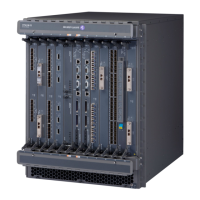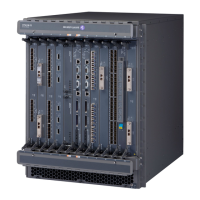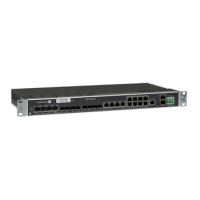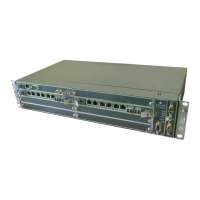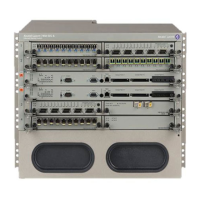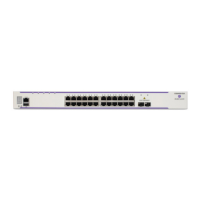System Management
7750 SR OS Basic System Configuration Guide Page 217
Nonstop Forwarding
In a control plane failure or a forced switchover event, the router continues to forward packets
using the existing stale forwarding information. Nonstop forwarding requires clean control plane
and data plane separation. Usually the forwarding information is distributed to the IOMs.
Nonstop forwarding is used to notify peer routers to continue forwarding and receiving packets,
even if the route processor (control plane) is not working or is in a switch-over state. Nonstop
forwarding requires clean control plane and data plane separation and usually the forwarding
information is distributed to the line cards. This method of availability has both advantages and
disadvantages. Nonstop forwarding continues to forward packets using the existing stale
forwarding information during a failure. This may cause routing loops and black holes, and also
requires that surrounding routers adhere to separate extension standards for each protocol. Every
router vendor must support protocol extensions for interoperability.
Nonstop Routing (NSR)
With NSR on the 7750 SR-Series routers7210 SAS-Series devices, routing neighbors are unaware
of a routing process fault. If a fault occurs, a reliable and deterministic activity switch to the
inactive control complex occurs such that routing topology and reachability are not affected, even
in the presence of routing updates. NSR achieves high availability through parallelization by
maintaining up to date routing state information, at all times, on the standby route processor. This
capability is achieved independently of protocols or protocol extensions, providing a more robust
solution than graceful restart protocols between network routers.
The NSR implementation on the 7750 SR-Series routers supports all routing protocols. NSR
makes it possible to keep the existing sessions (BGP, LDP, OSPF, etc.) during a CPM switchover,
including support for MPLS signaling protocols. Peers will not see any change.
Protocol extensions are not required. There are no interoperability issues and there is no need to
define protocol extensions for every protocol. Unlike nonstop forwarding and graceful restart, the
forwarding information in NSR is always up to date, which eliminates possible blackholes or
forwarding loops. This is also called the Alcatel-Lucent Carrier Environment Internet System
(ACEIS). NSR is a relatively new high availability technique. However, it is regarded the most
promising to ensure IP packets continue to forward once a route processor fails and allows for in-
service software upgrades.
Traditionally, addressing high availability issues have been patched through non-stop forwarding
solutions. With the implementation of NSR, these limitations are overcome by delivering an
intelligent hitless failover solution. This enables a carrier-class foundation for transparent
networks, required to support business IP services backed by stringent SLAs. This level of high
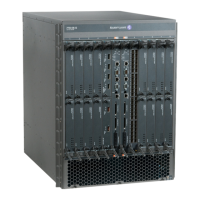
